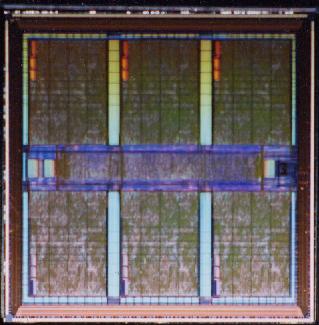Computational Science
Subtopics: Algorithms Hardware: GRAPE N-Body Simulations Intelligent Tools
 |
A single 30 Glops chip of the GRAPE-6 special-purpose computer for stellar dynamics simulations. |
My work in the area of computational science has focused mostly on applications in astrophysics. I have been involved in the development of various algorithms. The most popular of those is the Barnes-Hut tree code, originally designed for simulations in astrophysics, where it is now widely used. In addition, it has become a general tool in studies of bottlenecks in highly parallel computer architectures. Other algorithms use local coordinate patches to deal with wide discrepancies in length and time scales in star cluster simulations, and the use of iterative time-reversal techniques to improve the accuracy of orbital calculations.
Developing and algorithm, and implementing it in a computer code, are only two steps along the way of setting up successful scientific simulations. The third step is to create a software environment that enables you to set up, run, and analyze numerical experiments in a flexible and efficient way. I have been involved with the design of two such environments, NEMO and Starlab. Both are freely available: copies can be obtained through our website manybody.org.
Back in the eighties, our research in the dynamics of dense stellar systems was severely limited by the speed of existing supercomputers. This led us to consider building our own special-purpose computers, around chips designed for rapid parallel calculations of Newton's gravitational forces. In 1989, we started the GRAPE project at the University of Tokyo. In 1995, the GRAPE-4 broke the world speed record for floating-point calculations of any type, and in 2001, the GRAPE-6 again became the fastest computer on Earth.
Now that we have regular access to GRAPE computers running at speeds of tens of Teraflops, and generating data sets of many Terabytes, data handling has become more and more of a challenge. We are currently developing flexible archiving systems, as well as novel visualization tools. For example, we have started to use the dome of the Hayden Planetarium of the American Museum of Natural History in New York City to provide a form of virtual reality, through immersive simulations in which we can interactively `fly' through four-dimensional datasets that describe the full space-time history of the evolution of a star cluster.